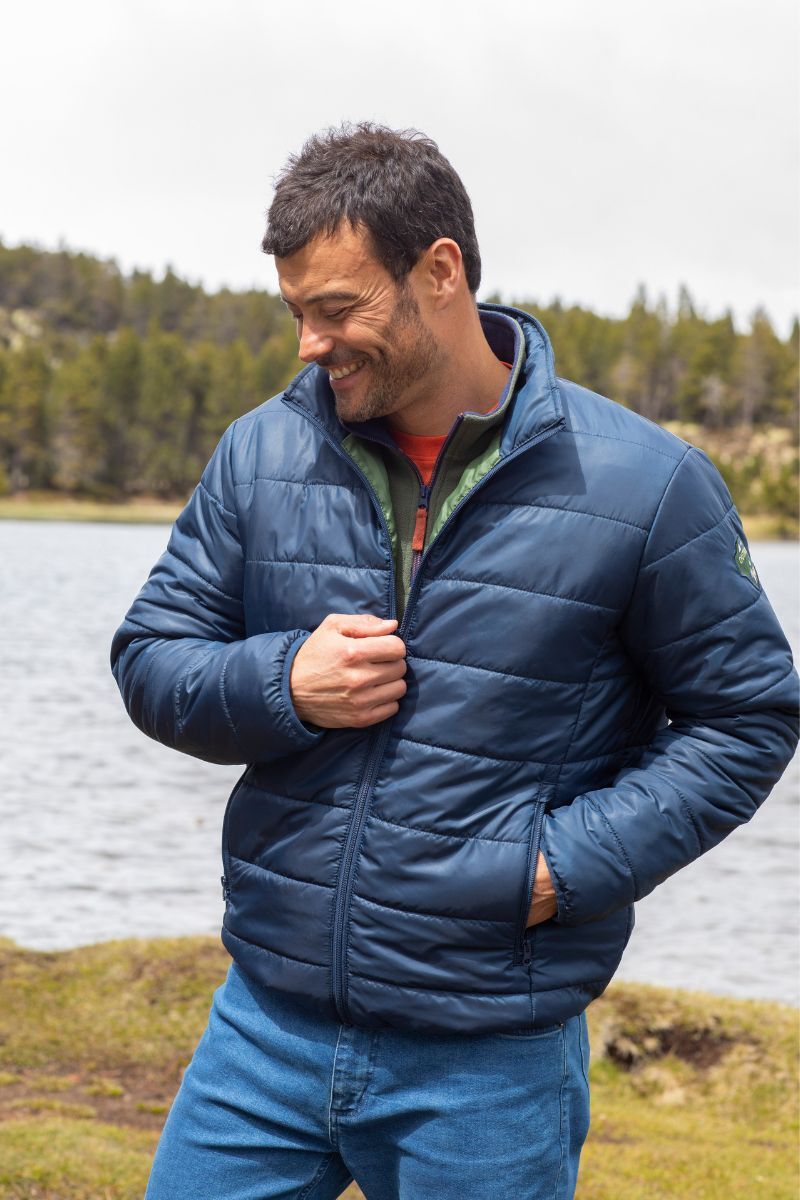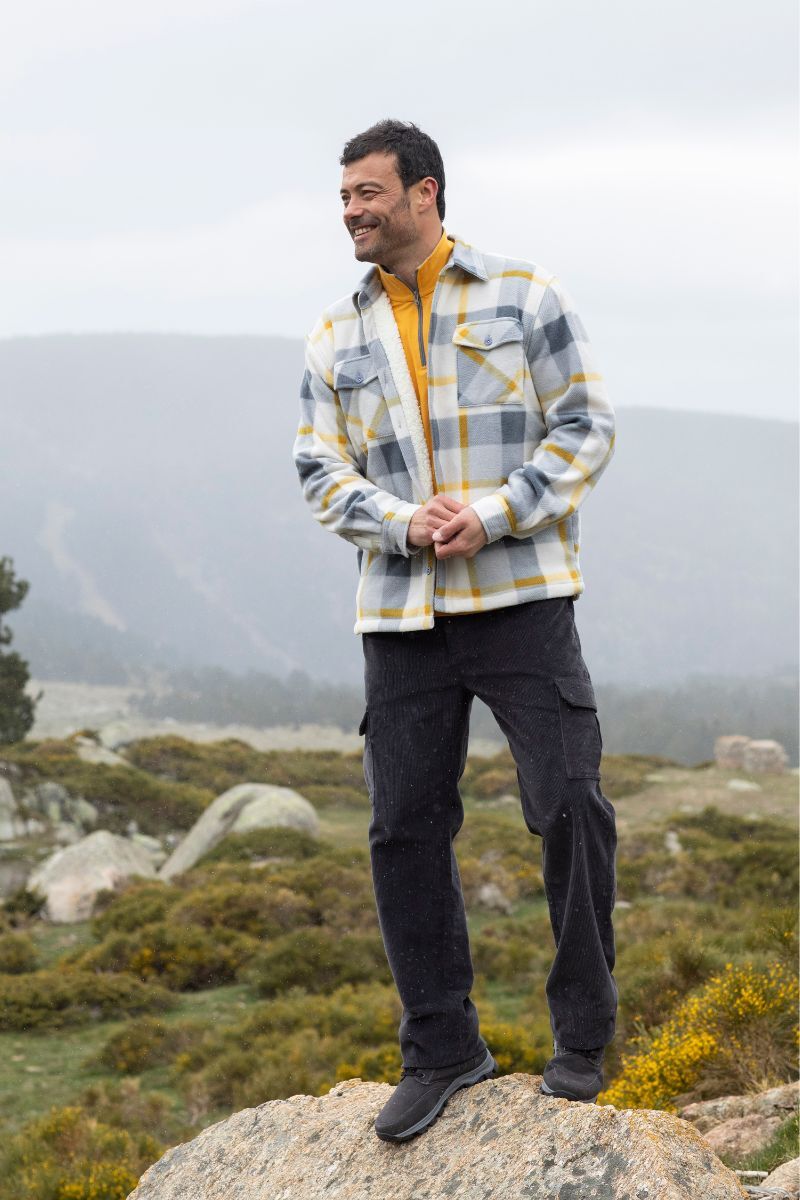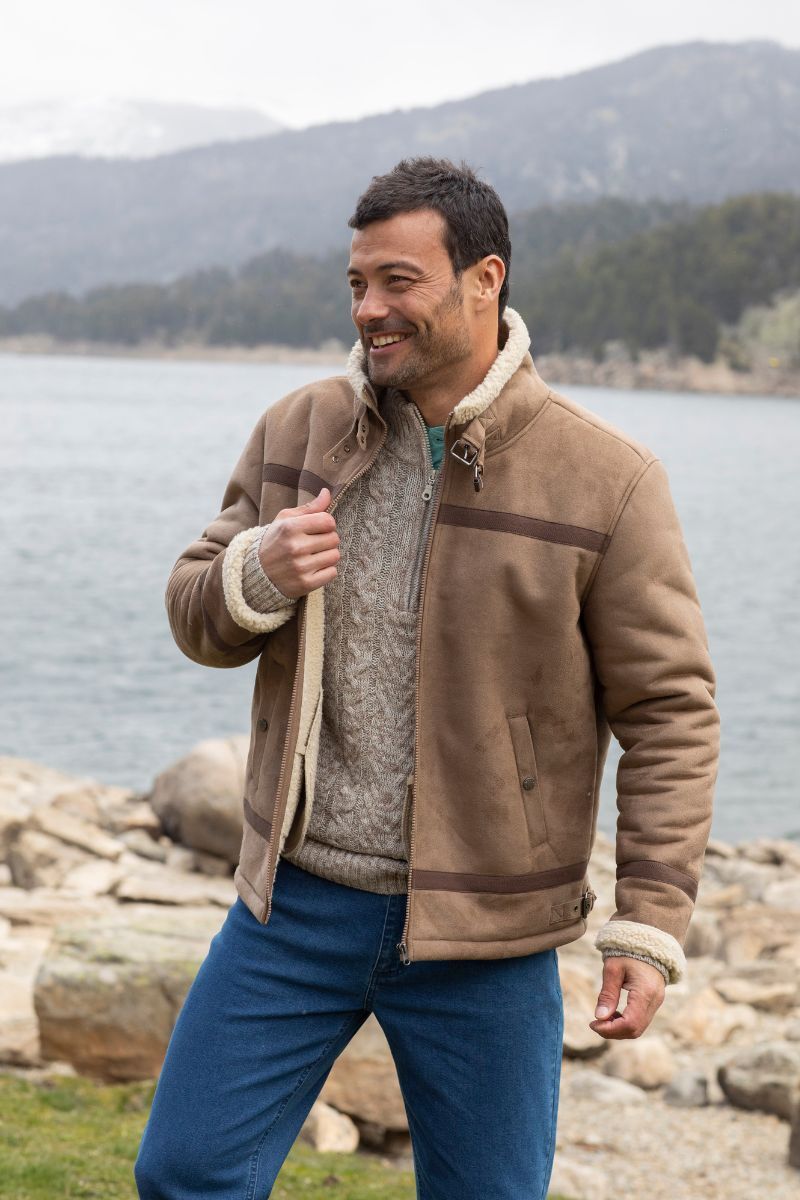
Men's Style Guide: How to Layer Clothes Properly
It's fair to say that layering clothes is an art. Nevertheless, this form of creative expression is actually a pretty simple one to crack, once you know how to go about it. To help you on your way, we've put together a guide that summarises everything from when to wear layers, to what their functional and fashionable advantages are, to how to overlay your garments with flair. So, read on, and let us fill you in on all things layering...
When to start wearing layers?
While layers can be worn at any time of year – especially given the temperamental UK temperatures – colder seasons and transition seasons are a prime time to perfect this clothing tactic. Autumn through to early spring is when layers really come into their own, as cold weather generally calls for more clothes and opens up the fashion floodgates to textured fabrics, longline cuts and statement outerwear. What's more, layering in the mid-season is a fashion hack that helps you navigate fluctuating temperatures, ensuring you're appropriately suited and booted whatever the weatherfront.
How to layer clothes for aesthetic appeal, warmth and insulation in winter
As we've already implied, layering your clothes has a dual purpose. This dressing technique not only leads to visually captivating outfits with built-in depth that helps elevate your look, but also results in increased warmth and protection against the elements, as well as the ability to regulate your temperature by adding or removing a piece. When layering, it's best to keep this twofold advantage in mind, so that you strike a balance between style and practicality with every garment you choose to compilate your killer ensemble. Aesthetically speaking, the beauty of layers is that they add dimension, create lines and shaping that can really flatter your figure, and provide you the freedom to play with patterns, proportions, textures and colours. While you're experimenting though, there are several things to keep in mind...




Tip 1: Limit yourself to 3 visible layers
While you're free to wear as many layers as you see fit (an extra vest or thermal underlayer may well be required in biting conditions), try to only have 3 layers on display for others to see. More than this, and you risk over-complicating your look. A plain and simple outfit, even if on the slightly dull side, is far easier-on-the-eye than one which has too much going on. Of course, 2 layers is acceptable, but 3 really is the magic number for adding the perfect amount of interest to your outfit.
Tip 2: Keep to 3 colours or try a tonal look
The golden rule of 3 applies to colour too! Regardless of how you compose your look – whether with layers or without – 3 colours is the upper limit for achieving an outfit compilation in which all elements work together in harmony. Nevertheless, since layers swing wide the doors of dressing possibility, it's important to remind yourself of the trio principle. Don't get carried away with colour just because there are multiple elements making up your look! Since your trousers already count as one colour, and any accessories too potentially, then you might be less free to play with colour in your up-top layers than you originally thought... Alternatively, if 3 colours seems a little too complex, then why not have fun with a tonal look, which sticks to one single colour. This doesn't stop you testing out different shades, which are all gradiants of the same colour. Whichever you opt for, these colour guidelines will help you nail a layered look!
Tip 3: Layer outwards, in terms of colour and thickness
When layering up, simply work your way out by building up colour and density. Think of it like a sliding scale, you want either your darkest or lightest item closest to your body, and your heaviest item on the outside. By gradating your outfit in this way, your overall look will have a visible logic to it that's soft and sweet on the eye!
Tip 4: Make layering simple
With the right items, layering needn't be a headache! Believe it or not, there is a way to simplify this practice. The secret lies in choosing items that naturally facilitate layering. Consequently, our easy hack for layering is quite purely to invest in a sleeveless gilet and a scarf. Both of these items will force you to layer, without you getting overwhelmed!
Tip 5: Get to know the ideal base layer basics
The ultimate purpose of a base layer – the underneath layer that is closest to your body – is to be soft on the skin and to wick away sweat to keep you dry. This inner layer is key to comfort. By eliminating moisture, it'll prevent you from becoming too hot or too cold. Whether you go for a quick-dry polyester, absorbent and breathable cotton, lightweight synthetic, or technical fabric (like merino wool) all comes down to your personal preference. Examples of prime base layers are vests, t-shirts, long sleeve tops, and thin, close-fitting turtleneck jumpers. For easy-pairing, monotone base layers in neutral shades are your best bet. But that doesn't mean a base layer has to be boring. Experiment with different cuts or delicate details as you see fit!
Tip 6: Familiarise yourself with the best mid layer clothing
The middle layer, otherwise known as the insulating layer, is intended for retaining your body heat. By trapping the warmth emitted by your anatomy, it keeps your body heat right where it belongs. Generally, this layer is thicker than your base layer, but still more on the lightweight than heavy-duty side (except in more extreme conditions, of course). In winter months, a crew neck knitted jumper makes for the ideal mid-layer – providing full-body coverage but enough space around the neckline to show off whatever is beneath, be it a tee, polo shirt, or men's shirt with a spread or grandad collar.
Tip 7: Perfect your outer layer
Last but by no means least, your outer layer or shell layer is the outermost part of your outfit. This is the one that is supposed to protect you from whatever environment you find yourself in. Designed to shield you from the elements, it should offer up extra warmth if required, and keep the wind and rain at bay. Needless to say, water-resistant softshell jackets and windbreakers are optimal in milder climes, and heavy-weight waterproof parkas and padded jackets come out on top in the thick of winter. Paying extra-special attention to other weather-combatting features like windproof funnel necks, adjustable cuffs and hems, double fastenings, hoods, and ultra-insulating or breathable linings will strengthen your pick of a practical number!


The art of layering – a fundamental fashion technique
And that's layering for you in a nutshell! As we've illustrated, to layer like a pro in the autumn, winter and early spring months, you need to understand the practical function of each layer – especially if you're gearing up for activities in the great outdoors. In essence, since you'll be stripping off and layering up throughout the day dependent on the settings that you find yourself in, you need to choose layers that work individually and independently of each other, but that still coordinate and complement one another as a whole. By following our top overlaying tips, great style and feel-good functionality come guaranteed!